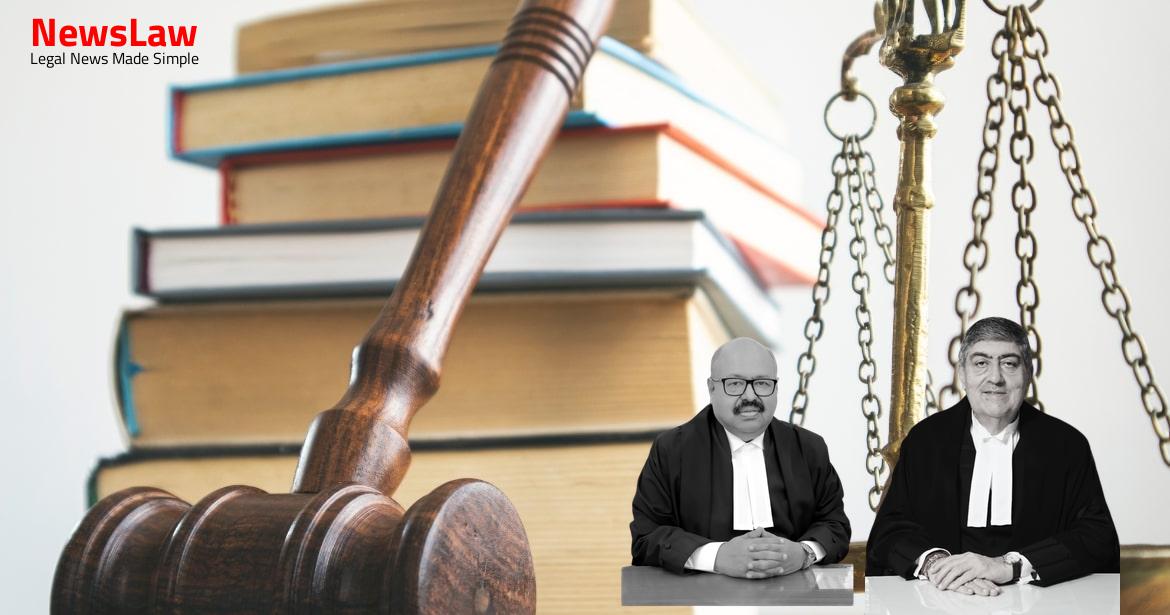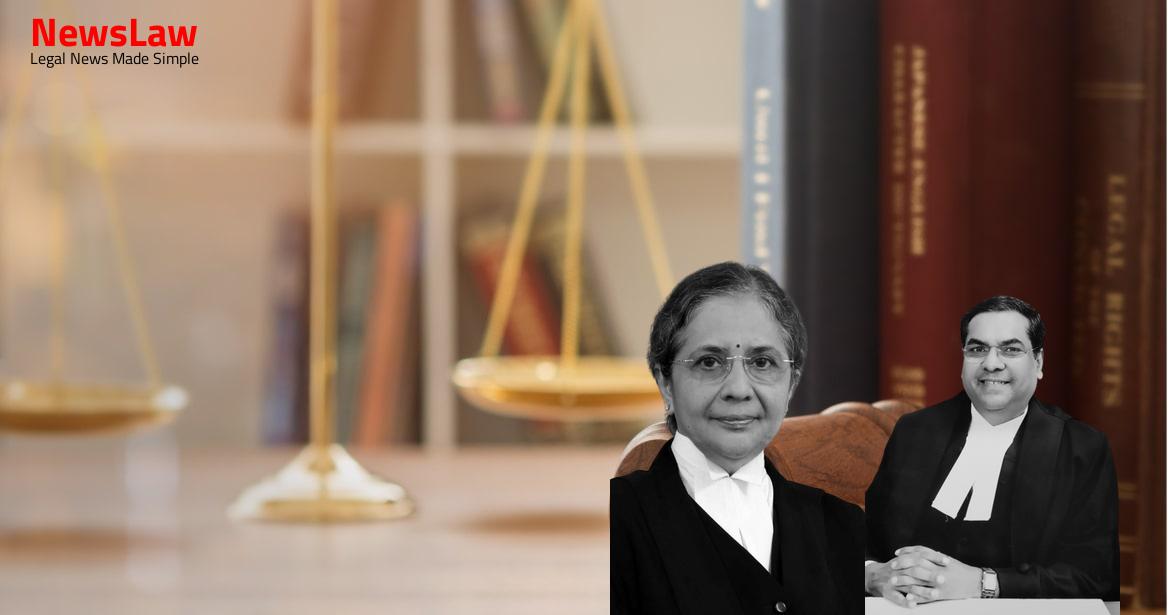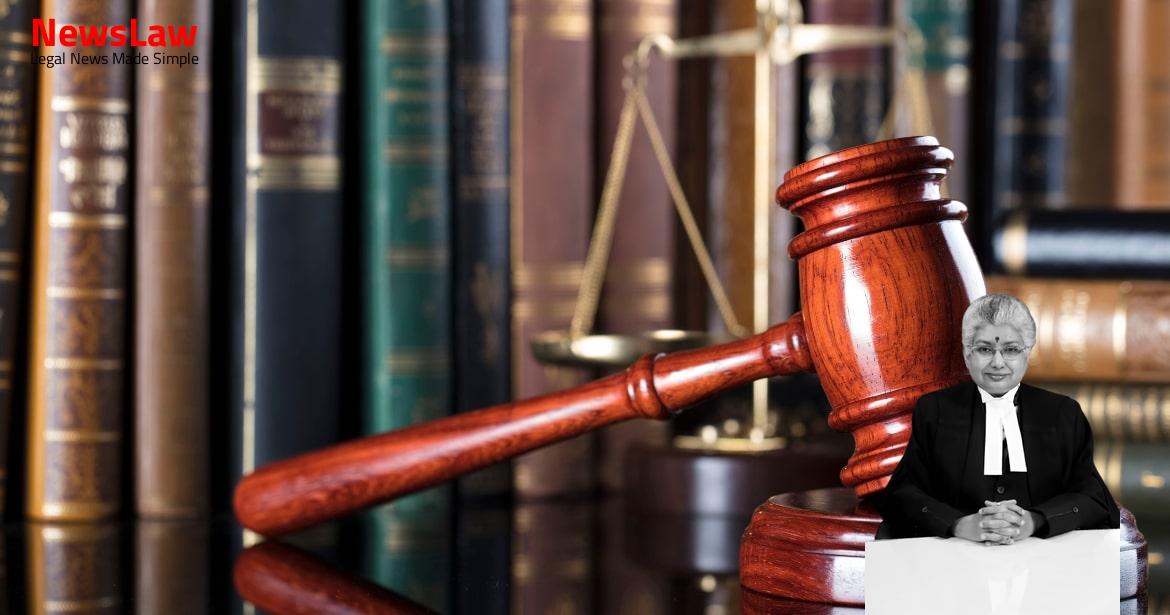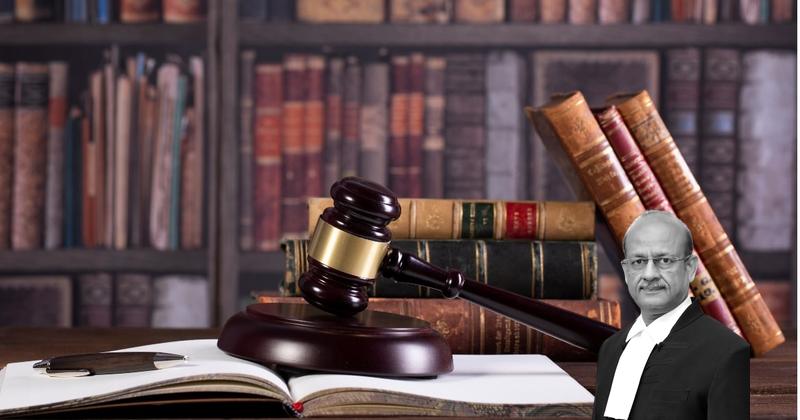Dive into the intricate world of legal scrutiny in criminal cases where the courts meticulously analyze evidence to determine guilt or innocence. This summary sheds light on the significance of thorough evaluation and critical analysis by the judiciary in upholding justice. Stay tuned to unravel the complexities of legal reasoning in criminal proceedings.
Facts
- The Chhattisgarh High Court upheld the conviction of the appellant in Criminal Appeal No. 513/2002.
- The trial Court convicted the appellant and co-accused Jagan Ram under Sections 302/34 of the IPC, sentencing them to life imprisonment and a fine of Rs.500/- each.
- The co-accused Jagan Ram was acquitted by the High Court based on the testimony of eyewitness Bhagat Ram.
- The trial Court’s guilty verdict was based on the evaluation of evidence presented in Sessions Case No. 149/2001.
- Prosecution examined seven witnesses to prove charges
- Son did not return home from Tamta market at night
- Grandson informed about Chunthuram and Jaganram killing Laxman
- Injury-inflicted dead body of son found by informant at location
- FIR mentioned land dispute between accused and victim, as well as victim’s past charges
- Prosecution’s case: Laxman assaulted and killed by Chunthuram and Jagan Ram
- FIR lodged by Mahtoram, father of deceased
- Accused pleaded innocence and alleged false implication in Section 313 CrPC statements
Also Read: Insurance Claim Repudiation due to Fire Incident: Court’s Legal Analysis
Arguments
- Mr. Nishanth Patil, State counsel, argues that the appellant had motive for the crime due to a past land dispute and previous murder trial.
- State counsel notes that the land dispute was resolved two years before the incident and the motive is unclear.
- Simple injuries on accused explained to possibly be from thorny shrubs, discrediting prosecution’s evidence.
- Recovery of weapons from accused’s house not linked to the crime, rendering them irrelevant for prosecution.
- Credibility of eye-witness Bhagat Ram questioned due to poor eyesight and weak hearing, further challenged by cloudy evening during incident.
- Identification of lungi by Filim Sai to establish presence of Chunthuram at the scene also disputed by defense.
- State counsel refers to the weapons of assault recovered from the accused’s statement
- Eye-witness testimony of Bhagat Ram (PW-4) who saw the assault on the deceased by the accused
- State argues that prosecution has proven motive, weapon recovery, and eyewitness testimony
- Injuries on the body were examined by the CHC Doctor (PW-7)
- Recovered weapons were not linked to the crime
Analysis
- Eye-witness Bhagat Ram admitted to having poor eyesight, making it unsafe to link the appellant with the exhibit relied upon by the prosecution.
- Witness behavior did not match the expected reaction of someone who knew the deceased and his family.
- Taj Khan (PW-2) who was in close proximity to the incident did not hear the victim’s cry, raising doubts about the witness’s account.
- Incorroborated testimony of the sole eye witness in the presence of police raises concerns.
- Major flaws noted in the identification process conducted by the police.
- Inconsistencies and infirmities found in the Test Identification Parade, rendering it unreliable for supporting the prosecution.
- The conduct and reliability of eye-witness Bhagat Ram (PW-4) were called into question due to poor vision and hearing capacity.
- Lack of proactive action by the eyewitness to report the incident to authorities or family members raised doubts about the testimony.
- Crucial forensic evidence pertaining to the case was withheld by the prosecution, leading to adverse inferences.
- Presence of Chunthuram at the scene called into doubt based on witness testimony inconsistencies and lack of conclusive evidence linking him to the crime.
- Inherent improbabilities in the prosecution’s story and inconsistencies in the conduct of the eyewitness cast doubt on the reliability of the testimony.
- Testimonial evidence of the incident was found inconsistent and corroborative evidence lacked credibility.
- Infirmities in the Test Identification Parade process, as well as gaps in forensic evidence, were highlighted as reasons for skepticism in the case.
- In Musheer Khan vs State of Madhya Pradesh, the ratio of the judgment will have an impact on the issue discussed.
- Justice A.K. Ganguly, writing for the Division Bench, summarized the legal position by citing a similar view in the case of Selvaraj vs The State of Tamil Nadu.
- In Selvaraj vs The State of Tamil Nadu, the prosecution story was found highly improbable and inconsistent with the ordinary course of human nature, leading to the setting aside of concurrent findings of guilt by two Courts below.
- The unreliability of an eye-witness testimony was highlighted in the case of Amar Singh vs The State (NCT of Delhi) by Justice Krishna Murari.
- In Amar Singh vs The State (NCT of Delhi), the conviction of the appellants was based on the oral testimony of PW-1, who was presented as an eyewitness to the murder of the deceased.
- In the absence of any material showing a proximate and immediate motive for the crime, it would be difficult to accept the cited motive to support the conviction.
- If two views are possible based on the evidence – one pointing to guilt and the other to innocence – the view favorable to the accused should be adopted.
- The appellant has successfully raised doubts about the prosecution evidence supporting the conviction.
- Reiteration of the well-established principle in criminal law that favors the accused when there are two possible interpretations of the evidence.
Decision
- The appeal has been allowed.
- The judgment of the trial Court and the High Court has been set aside.
- Interference in this case was deemed necessary.
Case Title: CHUNTHURAM Vs. THE STATE OF CHHATTISGARH (2020 INSC 616)
Case Number: Crl.A. No.-001392-001392 / 2011



